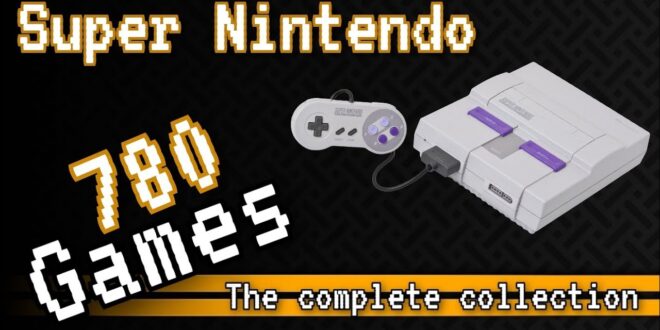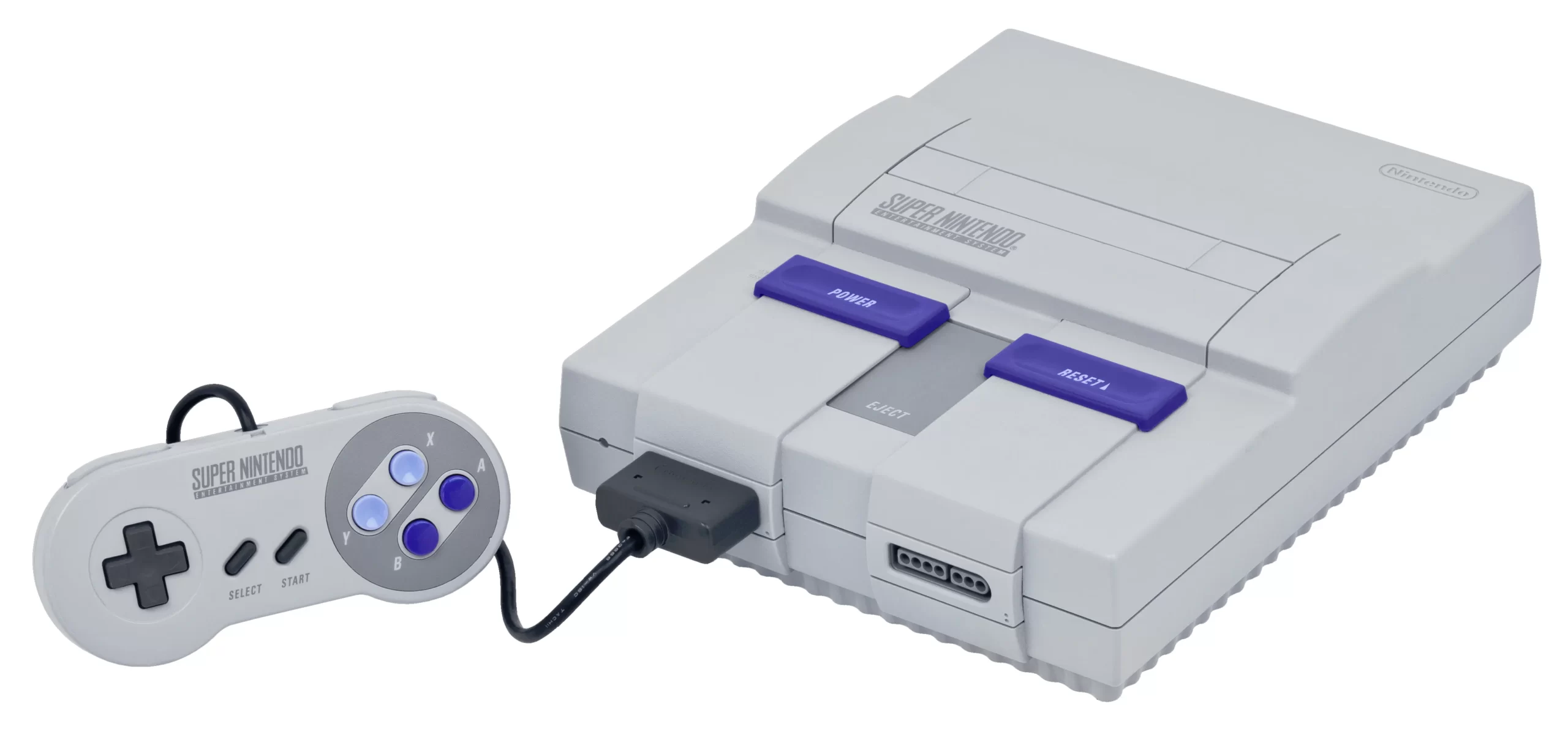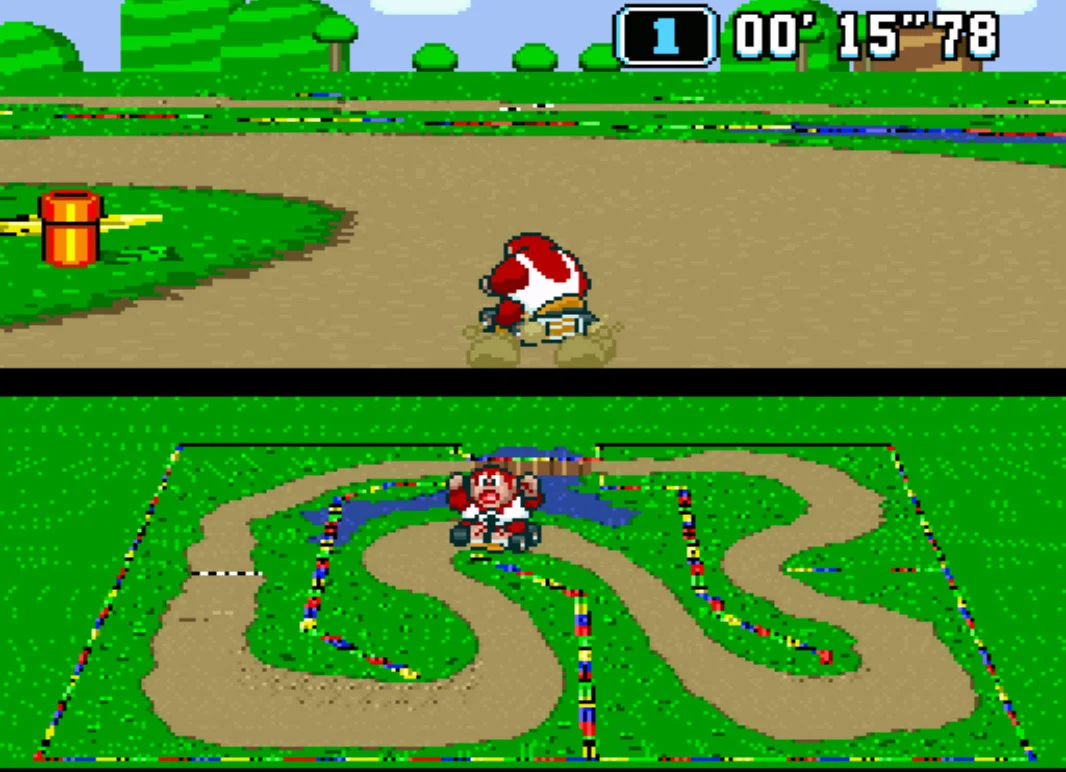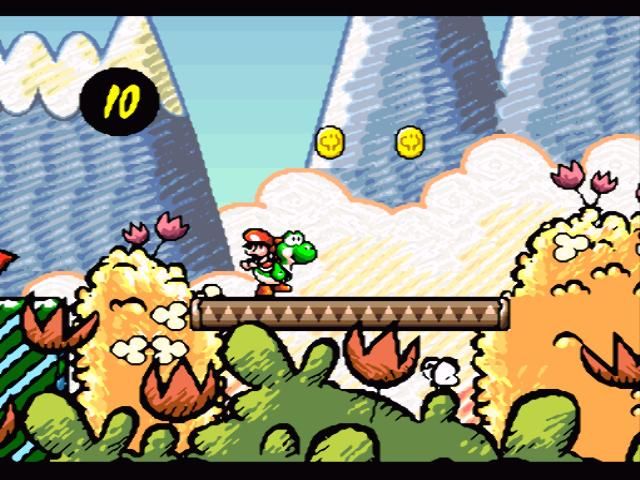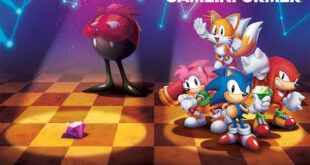The Super Nintendo: A 16-Bit Era Icon
The Super Nintendo Entertainment System (SNES), Nintendo’s second home console, stands as a towering figure in the pantheon of gaming. Released as the successor to the revolutionary Nintendo Entertainment System (NES), the SNES boasted advanced graphics and sound capabilities that wowed gamers of the early ’90s. Though I never owned a SNES myself, having been a Sega Genesis and Sega CD user, my cousins’ SNES was a gateway to a treasure trove of gaming that I enjoyed immensely during visits.
Specifications
The technical prowess of the SNES was a significant part of its appeal:
- CPU: 16-bit 65c816 Ricoh processor clocked at 3.58 MHz
- RAM: 128 KB of general-purpose RAM and 64 KB of video RAM
- Graphics: Custom-designed Picture Processing Unit (PPU) that could display 256 colors simultaneously from a palette of 32,768, with a maximum resolution of 512×448 pixels
- Audio: 8-channel ADPCM audio, with the Sony SPC700 sound chip providing a distinctive and rich audio experience
- Storage: Cartridge-based, typically ranging from 0.25 to 6 MB in size
History
Nintendo launched the SNES in Japan in 1990 and in North America in 1991. It entered a fierce competition with Sega’s Genesis, a rivalry that would define the 16-bit era. Despite the challenge, the SNES became a best-seller worldwide, carving out a place in gaming history.
System Review
Design and Hardware
The SNES featured a rounded, sleek design with its signature purple sliding power and reset switches. The controllers introduced the now-standard shoulder buttons, giving players more control and complexity in gameplay.
Gaming Library
The SNES library is often celebrated for its quality and innovation. It featured genre-defining titles like “Super Mario World,” “The Legend of Zelda: A Link to the Past,” and “Super Metroid.” These games pushed the boundaries of what was possible in terms of storytelling, gameplay mechanics, and visual artistry in video games.
Audiovisual Experience
The SNES’s graphics were a significant step up from the NES, with detailed sprites and backgrounds that brought its games to life. Mode 7, a graphics mode that allowed for scaling and rotating planes, provided a pseudo-3D experience in games like “F-Zero” and “Pilotwings.” The sound chip, designed by Sony, allowed for complex musical scores and clear sound effects, which composers used to create some of the most memorable video game music of the era.
Personal Reflection and Legacy
While I was never a SNES owner due to my loyalty to Sega’s platforms, my cousins’ console was a source of great memories. The SNES’s ability to bring worlds to life in a way that had seemed impossible just years before left a lasting impression on me. The console’s impact on the gaming industry and culture was immeasurable, and it remains a beloved system for collectors and retro enthusiasts.
The SNES solidified Nintendo’s reputation for quality and creativity, setting a high standard for future consoles. It’s a testament to the system’s enduring legacy that many of its games are still played and revered today.
Conclusion
The Super Nintendo Entertainment System was more than just a technological leap forward; it was a canvas for some of the most enduring art and storytelling in video game history. For anyone interested in exploring the history of the SNES or revisiting its vast game library, you can start with these links: SNES history and SNES games. Even as someone who grew up with a Genesis, the SNES remains an integral part of my gaming nostalgia and respect for the medium’s growth.
 Retro-Replay.com Retro gaming reviews, news, emulation, geek stuff and more!
Retro-Replay.com Retro gaming reviews, news, emulation, geek stuff and more!
